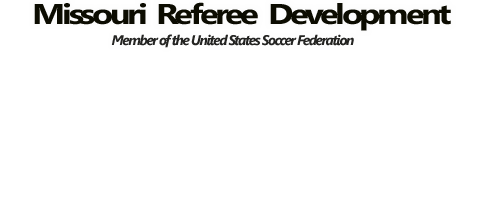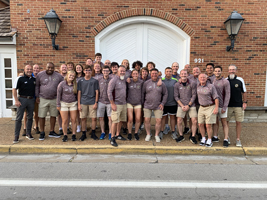Ten tips for better Assistant Referee performance,
officiating team communication, and effective game management
In the diagonal system of control, effective officiating demands knowledge, physical fitness and close attention to mechanics by all three officials. Here are ten valuable tips every assistant referee (AR) can use for better individual performance, better crew communications on the field, and better game management. It’s important to stress that in all cases, the AR and center referee should make eye contact before an AR gives any signal.
- For accurate offside decisions you should stay even with the next to last defender or the ball, whichever is closer to goal line.
- Raise and hold the flag vertically to signal an offside infraction to the referee. Once the referee blows the whistle to acknowledge the AR’s signal, indicate where the area even with you on the field of play the defending team should take the indirect free kick from. That is done by you holding the flag straight out pointing to the – near side (down at 45 degrees), mid field (straight out), or far side (up at 45 degrees).
- To indicate a foul, raise the flag, and if not seen wave it back and forth once. When your flag is recognized by the referee’s whistle, immediately indicate the direction of restart. If the foul location should result in a penalty kick, you can communicate that opinion covertly to the referee by a signal agreed upon during your pregame. Usually ARs hold the flag parallel to the ground with a hand on each end to let the flag hang straight down. If the referee accepts the signal by pointing to the penalty mark, run to the goal line near the intersection of the goal line and the penalty area line to be goal judge. If the referee does not acknowledge that PK signal, immediately move next to the second to last defender unless pregame directions specify otherwise.
- Raise the flag, if necessary, to indicate the whole ball has crossed the touchline. Unless other pregame instructions prevail, once referee's whistle acknowledges your signal, immediately indicate the direction of the throw-in with your flag.
- Raise the flag to indicate you have information for the referee. If you need to verbally communicate critical information to the referee, use a signal agreed upon during your pregame. You can hold the flag across your upper body while continuing to make eye contact. Remember the referee has final say, because the AR’s responsibility is to "assist", NOT "insist". That means what and how you share this with the referee is critical to his/her accepting or not acting on your information, so it must be accurate, complete and precise. For example: instead of telling the referee player A7 committed a foul, report that “Player A7 intentionally struck B2 in the side of the head with her elbow when the two went up for a header.”
- Raise and display the proper signal to indicate either or both teams want to make substitutions. When the referee has acknowledged the signal by stopping the clock or beckoning the substitutes onto the field, put the flag down. If the pregame was to hide your flag behind your leg or body until the substitution is complete and the player counts are correct, follow the pregame.
- When staying even with the second to last defender requires that you run along the touchline, keep the flag fieldside so it is always in view of the referee. After a corner kick has been indicated by the center referee, move close to the corner and point the flag down at a 45-degree angle toward the corner. If the kick is from your side, take a position off the field of play even with the goal line and looking directly along the whole goal line. Your position should not interfere with the player taking the corner kick.
- To signal the restart is a goal kick, hold the flag straight out parallel to the goal line and the field of play. Once acknowledged by the referee, move up or down the touchline so you are even with the second to last defender.
- Both Assistant Referees should be prepared to "mirror" each other’s signals each other when the referee is facing away from the AR making the signal, such as on substitutions or incidents the referee cannot see.
To summarize, always make eye contact with the referee before raising your flag and always adhere to your pregame instructions. Your officiating team will be more consistent and more effective.





